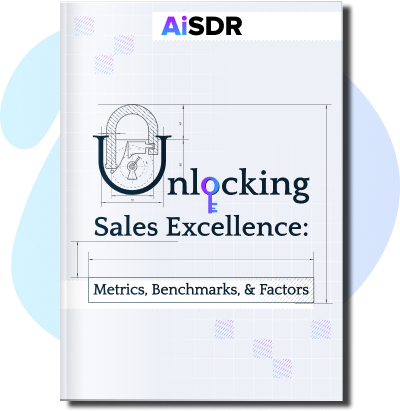Why Buyer Personas Are Critical for Business Success

Find out why every business needs a well-researched buyer persona for sustainable, long-term success
Imagine this scenario: You’ve released a product that the local market gobbled up. Now, you want to expand your thriving business, and a question comes up. Should you just replicate the same proven marketing strategies in a new location?
Schnabl chose not to.
As Austria’s leading producer of screwless electrical fastening systems, Schnabl wanted to branch out to the UK in 2016. However, the company decided to abandon its old strategy of capturing opportunities as they came. This time, they chose to go for controllable growth where they could deliberately create demand for their product.
They knew they needed to approach prospects in a way that resonated. So, the company did thorough sales persona research and then crafted a proposition that spoke the language of UK electricians. They also updated their website and segmented it by decision-maker type, splitting it into the contractor, the consultant, and the wholesaler.
The campaign succeeded: 20% of the interactions converted, bringing in an expected annual revenue of £865,000.
The situation hasn’t changed over the last 7 years. Buyer personas remain an effective marketing tool, and AI-powered SDR platforms like AiSDR leverage personas to speed up content creation, outreach, and personalization.
What are buyer personas?
A buyer persona is a detailed description or model of a fictional person that best represents your target buyer.
It guides your sales and marketing teams as they create campaigns and pitches to capture prospects and retain existing customers. It also helps the product development teams develop features that meet your target customers’ needs and preferences.
A high-quality persona model typically includes the following details:
- Demographics – Covers details relevant to your offerings, such as gender, age, location, marital status, education, and household income.
- Behaviors – Takes stock of the target customer’s purchasing behaviors, priorities, and decision-making processes.
- Goals – Paints a picture of the buyer’s goals and motivators so you can focus on them instead of going on and on about how great your product is.
- Challenges and pain points – Captures leads by identifying their pain points and offering relevant solutions. This way, sales and marketing teams can get right to the heart of the customer’s pressing needs.
Buyer personas (as well as their close cousin the Ideal Customer Profile) are crucial for crafting targeted campaigns that enjoy greater success than generic campaigns. And if you’re focusing on B2C products and services, buyer personas become 100% essential.
Why buyer personas are essential: generic vs targeted marketing
Imagine walking into a store and having a salesperson offer a product you don’t need or want. Most likely, you’d get annoyed. But if someone were to approach you with an offer that resonated, you would likely feel heard and understood.
Schnabl could have just switched the language of their Austrian website to English once they decided to market their product in the UK, but that might have fallen on deaf ears. After all, they offered a novel product that UK electricians might not have realized they needed.
Schnabl’s extensive persona research allowed them to create a campaign that truly connected with UK electricians, as summed up in the slogan: “No anchors, no screws, no tools, no effort, no brainer.”
How buyer personas drive business growth
Not only do well-developed buyer personas directly feed a company’s bottom line, they help your sales team focus on delivering value. The stronger your buyer persona, the more effective your messaging and the more deals you close.
Tailored messaging
A well-crafted buyer persona in business allows you to get to know your target customers more deeply and speak to them in a way that resonates, improving your odds of successful inbound sales. As a result, you should practice due diligence and avoid common mistakes when creating your buyer persona.
Schnabl demonstrated this by segmenting their website by decision-maker. The company spoke directly to their respective target markets—contractors, consultants, and wholesalers—making it easy for their prospects to navigate the website.
The personalized campaign increased engagement, conversion, and revenue for Schnabl.
Accelerated sales funnel
Effective lead generation allows you to attract the right prospects, nurture them effectively, and speed up their conversion into paying customers. At the core of an effective prospecting strategy is a well-defined buyer persona.
After all, your efforts will only be useful if you are capturing the right leads. And it all starts with knowing who to target.
Schnabl needed to get the word out about their product offering. A great website alone couldn’t do the trick. They had to use multiple communication channels to get it done, including email, direct mail, social platforms, and telemarketing. Their buyer personas helped coordinate this collective effort and ensure a great experience with the brand.
Product development
Not only will buyer personas help you reach the right prospects or craft compelling marketing messages, but they can also assist you as you create and improve your product offerings.
The more you know your customers, the better you get at delivering products that meet their actual needs.
Identify a pressing pain point, create a solution for it, and watch a slew of leads rush down your pipeline. A well-developed user persona can also help you identify and create additional product features to make your existing customers even happier and more loyal to your brand.
Efficient resource allocation
Well-crafted buyer personas help steer sales activities in the right direction, saving your team’s time and resources.
By equipping sales development representatives with fully researched buyer personas, they’re more capable of reaching the right leads and delivering effective sales pitches.
This is important considering the cost of a full-time SDR. In the United States, SDRs are paid an average salary of $54,000, with top SDRs costing up to $75,000 annually. Good buyer personas can help ensure your company is getting the most out of each dollar.
You can save costs and improve your SDR ROI even further by equipping your teams with a virtual SDR like AiSDR. At 10% of an SDR’s salary, AiSDR will create personalized email campaigns, handle objections, and drive your leads to book demos.
Real case studies
Here’s a closer look at some household names that have successfully leveraged buyer personas.
Nike
At a keynote address in Las Vegas, Nike’s Chief Digital Officer Adam Sussman gave a behind-the-scenes sneak peek at how Nike targeted three distinct target audiences: weekend runners, style shoppers, and sneakerheads.
Here’s a quick recap of how Nike defines each customer segment:
- Weekend Runner – She’s a woman in her 30s who loves the Nike Run Club app, which allows runners to track their distance, time, route, pace, and calories. Nike targets this future half-marathoner with customized shoe suggestions based on her running habits.
- Style Shopper – She’s a 26-year-old woman who spruces up her looks before, during, and after workouts with stylish activewear. The Nike App presents her with athletes geared up in the latest trends. The style shopper gets “Reserved for You” product recommendations based on her size and shopping behavior.
- Dedicated Sneakerhead – Sneakerheads live for the thrill of finding limited-edition throwbacks. Nike delivers with the SNKR Stash experience, providing members with exclusive access to product launches.
By digging deep and tailoring content for a specific customer segment, Nike was able to better accomplish its goal of delivering data to athletes in personalized and unique ways.
On top of that, creating a well-defined, narrow source audience will make it easier to create spin-off campaigns that target a lookalike audience.
Apple
One market segment that Apple has enjoyed great success with is the creative professional. Look no further than the array of products and apps that bear the name “pro”: Macbook Pro, Final Cut Pro, etc.
Here’s a glimpse at the typical creative professional: A tech-savvy professional who values quality and aesthetics and is willing to invest in technology that helps them do their best work. Creative professionals typically live in cities, as well as 25 to 40 years old, well-educated with a bachelor’s or graduate degree, and driven by a desire to innovate or reach new frontiers
After years of successful product launches and top-notch marketing, Apple has cultivated creative professionals into a group of fiercely loyal followers.
Procter & Gamble
Specializing in consumer goods, here’s a closer look at how P&G appealed to two specific target audiences: moms and dads.
- Mom – Procter & Gamble captures buyers for their household products by targeting the person typically in charge of buying these items: the mom. They achieve this with initiatives like the “Raising an Olympian” campaign, highlighting the mother’s role in the Olympian’s success.
- Dad – Dads are often in charge of buying household items like cleaning solutions, razors, and wall cleaners. By releasing ads such as their commercial “The Look”, not only did P&G appeal to dads who care for their kids, but they fine-tuned their messaging to relate to a certain customer segment – in this case, black fathers.
Nike, Apple, and P&G are just a few of the many businesses that have successfully crafted and used buyer personas to their full advantage. Their experiences prove that any company wanting to expand into new markets or new audiences will need to start from scratch with a buyer persona that takes into account the target customer’s journey.
FAQ
How can I use buyer personas in my business?
Buyer personas help your sales and marketing strategies, campaigns, and activities move in the right direction. The targeted efforts feed your bottom line with resonant brand messaging, increased sales, and effective product development.
Do I need multiple buyer personas?
By creating multiple personas, you can expand your market reach. This will help you fix a common challenge associated with a single sales persona: the risk of narrowing down your target market too much.
How do I collect data for buyer personas?
You can gather data from your CRM, market research, and industry trends. Another option is to run surveys and conduct interviews and focus group sessions to harvest more information and insights from your existing customers.











